ENTRÉE was installed in March 2021 at Martch Studio in Ayvalık, on the northwestern Aegean coast of Turkiye, a town shaped by the forced deportation of its Greek population in 1917 and again during the 1923 population exchange. The architectural elements I referenced, fluted shafts, pediments, and doorframes, are what remain from the homes and churches left behind. They are more than ornaments; they are fragments of absence.
I worked with these forms by flattening them, removing depth, function, and authority. The fluted Corinthian columns I created no longer support anything; instead, they cling to the wall like memory. Cast in polyurethane, their surfaces are tinted with the pinkish tone of Ayvalık’s garlic stone, not the material itself, but its chromatic echo, used here as a gesture toward place without claiming ownership.
ENTRÉE lingers at the edge of access. It reflects on what it means to enter spaces built by others, to inherit thresholds shaped by dispossession. The installation becomes a quiet staging of refusal: not to reconstruct, but to stay with the unresolved, the flattened trace, the unanswered key.

“Flatly Fluted Horizontally Formated Orders,” 2021, two identical Corinthian capitals, cast polyurethane, 85x65x10cm
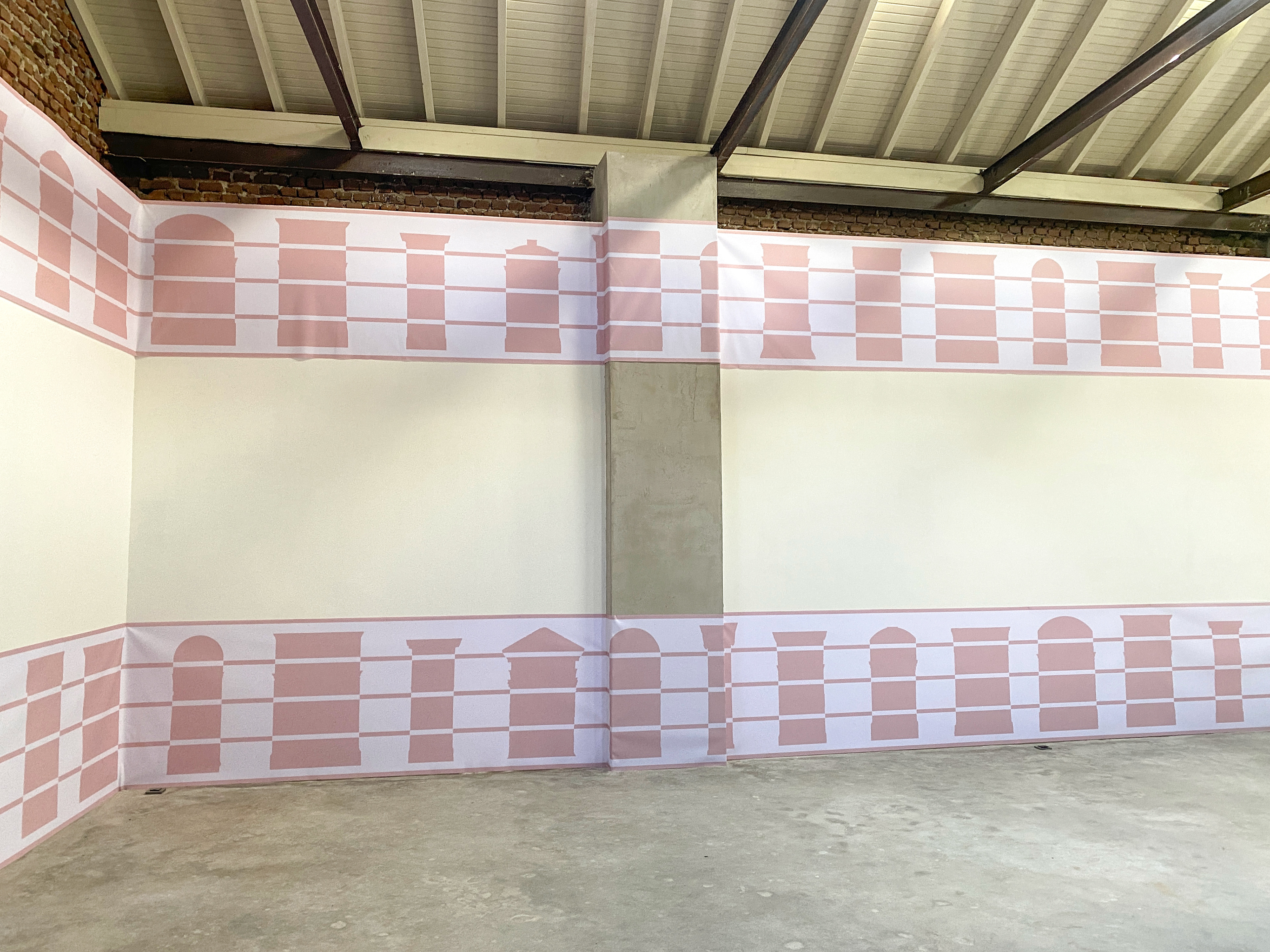
“Flatly Fluted Horizontally Formated Orders,” 2021, digital print on canvas, 100x2000 cm, two pieces
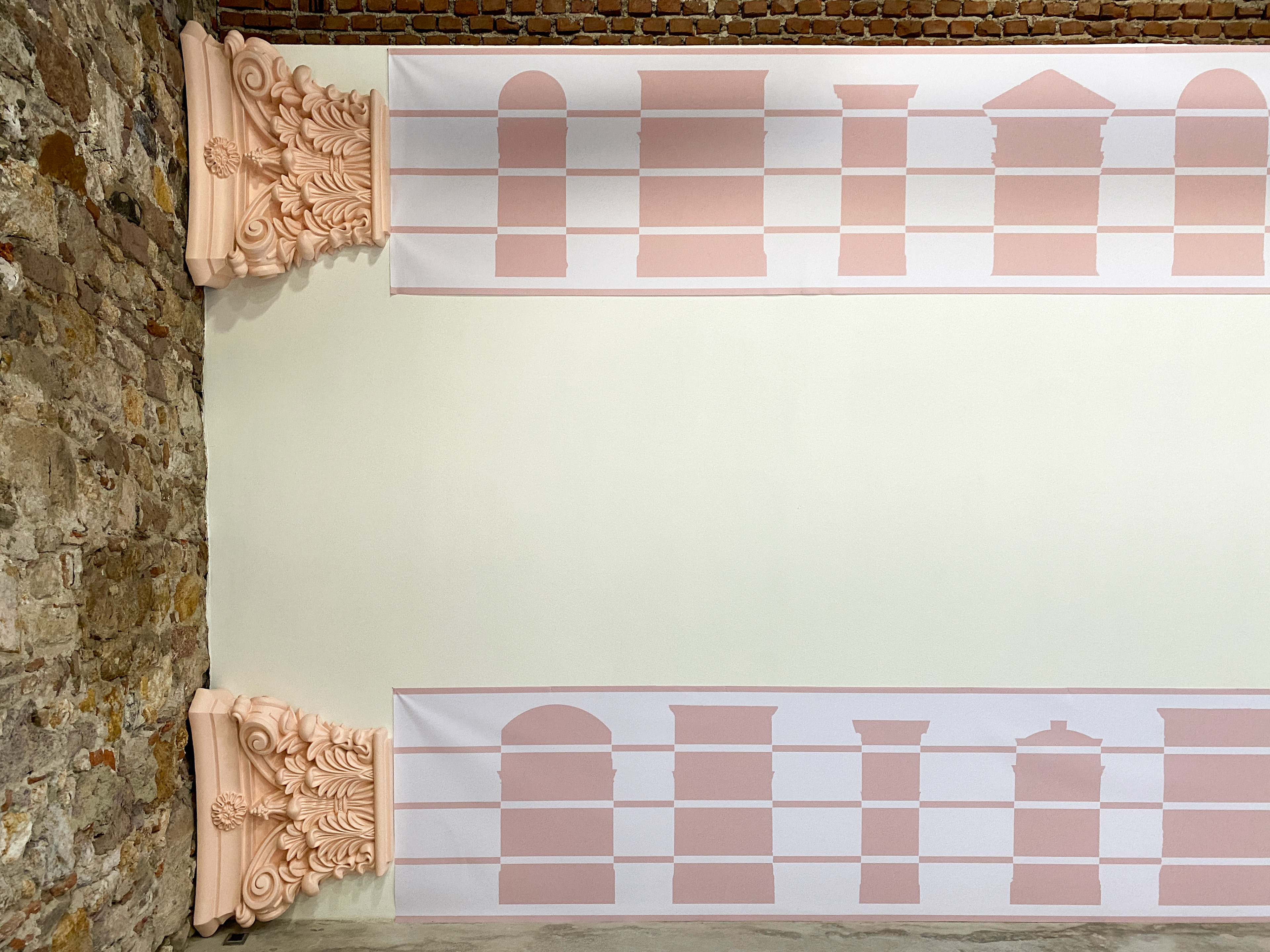
View from the "Entrèe," 2021
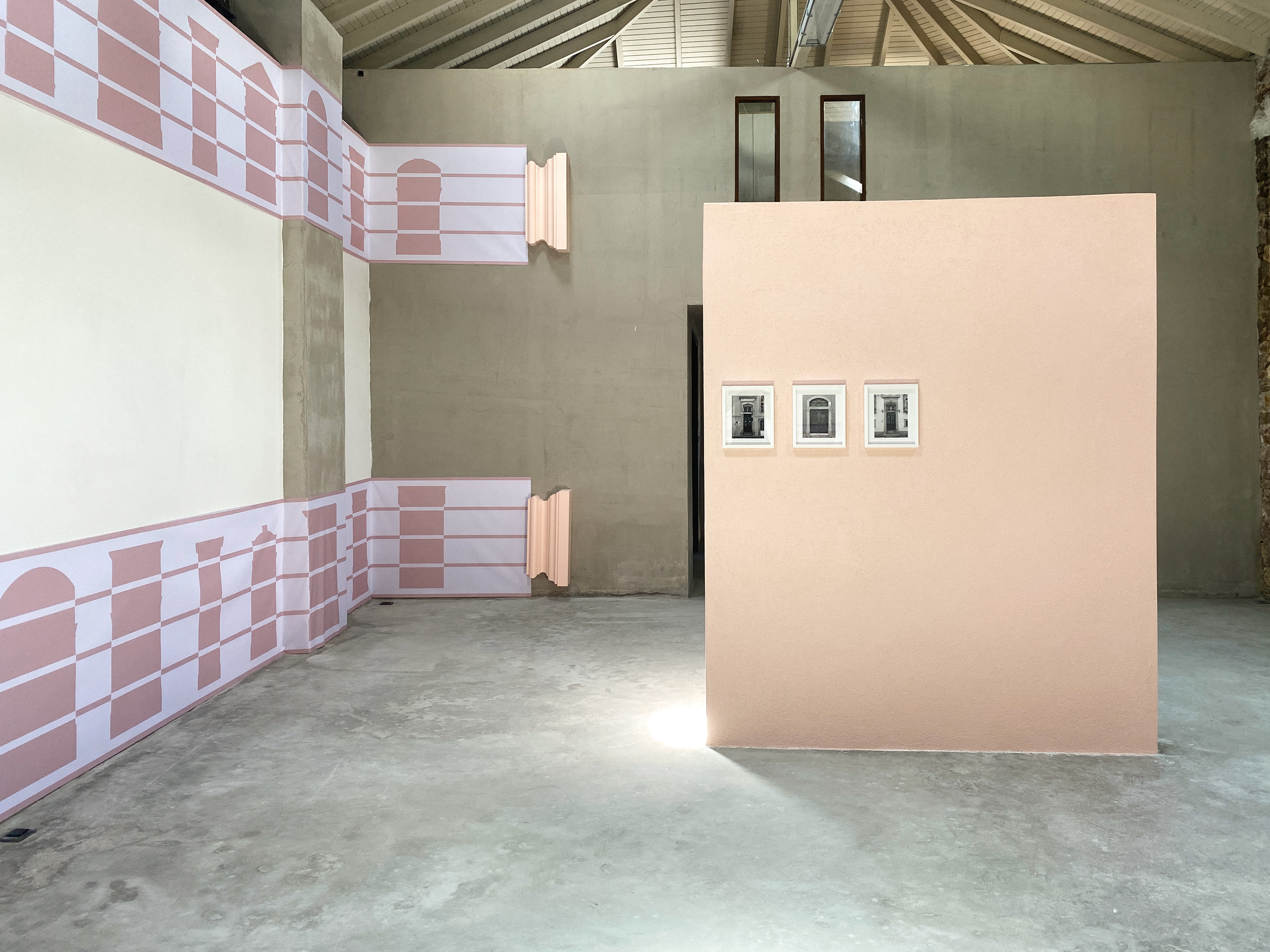
“Flatly Fluted Horizontally Formated Orders,” 2021, two identical Corinthian bases, cast polyurethane, 65x40x10cm
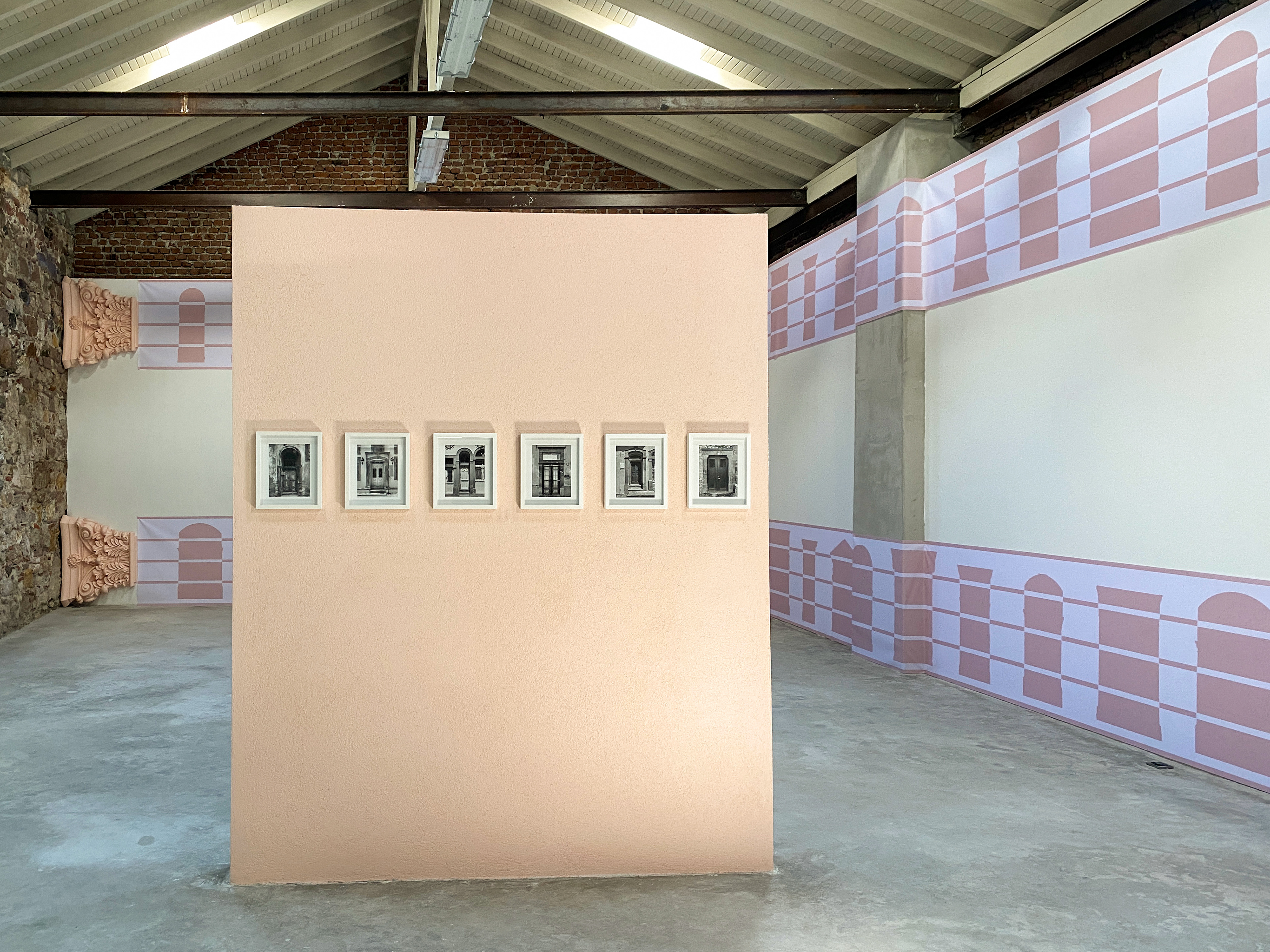
View from the "Entrèe," 2021
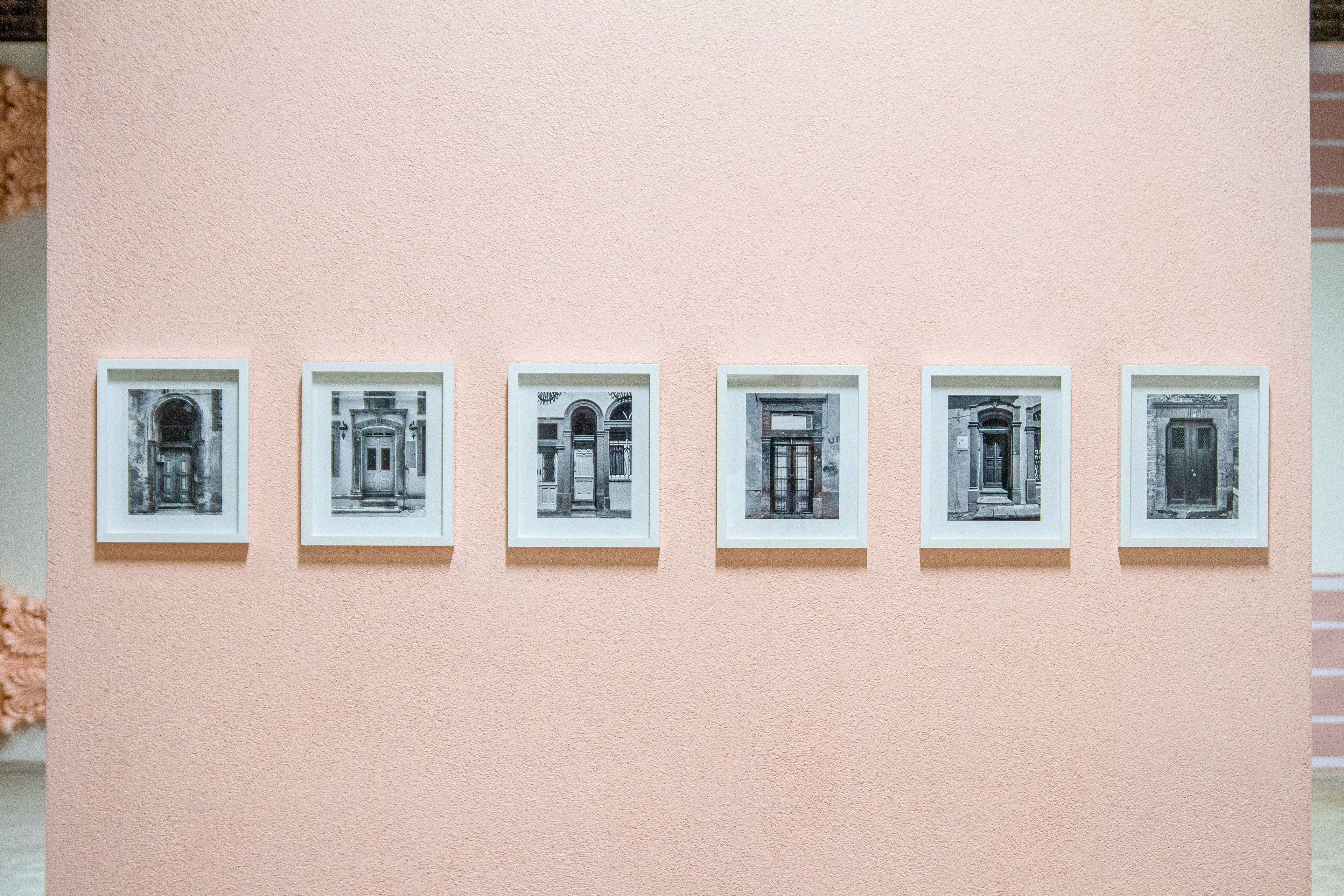
“Façade ingredients” 2021, fine art print, 21x26cm
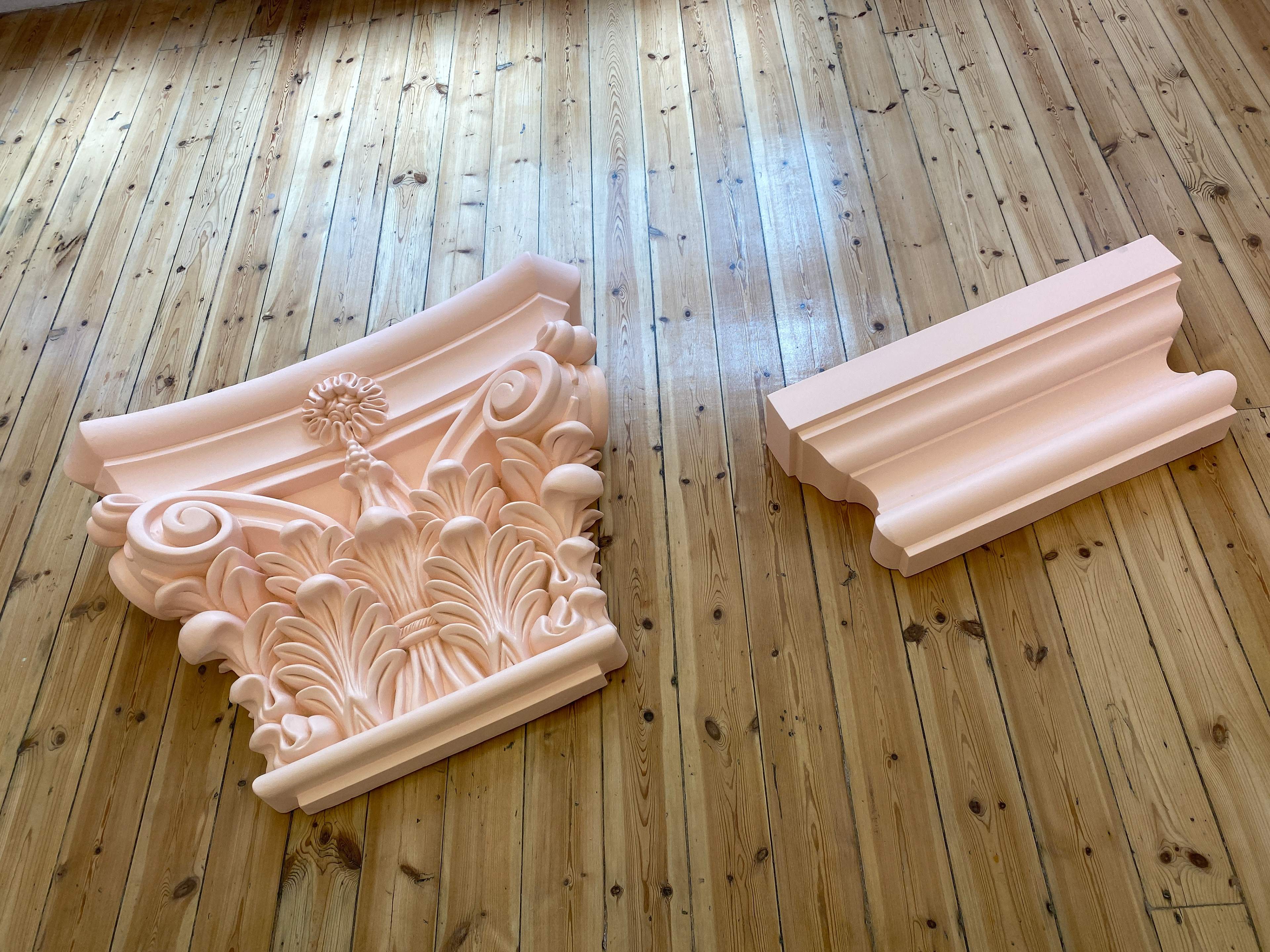
Corinthian capital and base
The facades are flat and long here. Bay windows, doors, moldings, and fringes inhabit them orchestrally. Column pilasters are here too, alive and kicking, on both sides of the door: Doric, Ionic, and Corinthian. They’re all made of garlic stone. Because garlic stone produces a unique color, they’re all pinkish! At times, the upper cover of the door ends with horizontal consoles and, at other times, triangular pediments. Simple geometry is all over this magical seaside town. A philosopher once said that colonnades around buildings are supplementary to the main work. I’m sorry, but I disagree. Here, on the northwestern Aegean coast of Turkey, columns are not an embellishment, not a support, not an ornament, not an extra, not a by-product, not an accessory, not an addition, not a complementary, not a subsidiary, not a subordinate, not an exterior, and not an outer. How can one know what is integral and detachable in a town with a history like this?
I know that receiving the key to a door can signify a change in status from outsider to insider. What happens when a key is taken away from you? What happens when you’ve pushed away from an inside to an outside? What happens when you have no choice but to leave your key? How on earth does one know who is an insider and an outsider in a town with a history like this?
I wanted to make my column in which the capital of the Corinthian order has lavish ornamentation carved to resemble leaves and flowers. The column shaft was extracted from the geometric memories of the doors of Ayvalık houses, in which depth or thickness can only be seen as a surface. Luckily, with the departure of depth, rhythmicity arrived. Once again, the shaft was fluted true to its history, but this time by placing the door shapes alongside a canvas. The pair of fluted shafts, parallel and horizontal, were stretched out onto a massive wall in one of Ayvalık’s old buildings whose door opened directly to the street, accompanied by Corinthian capitals from one end and their bases from the other, almost as in the canvas but with one difference: stretcher bars were replaced by the wall. The wall became the support. The wall became the work.
Irem Gunaydin
June 2021, Ayvalık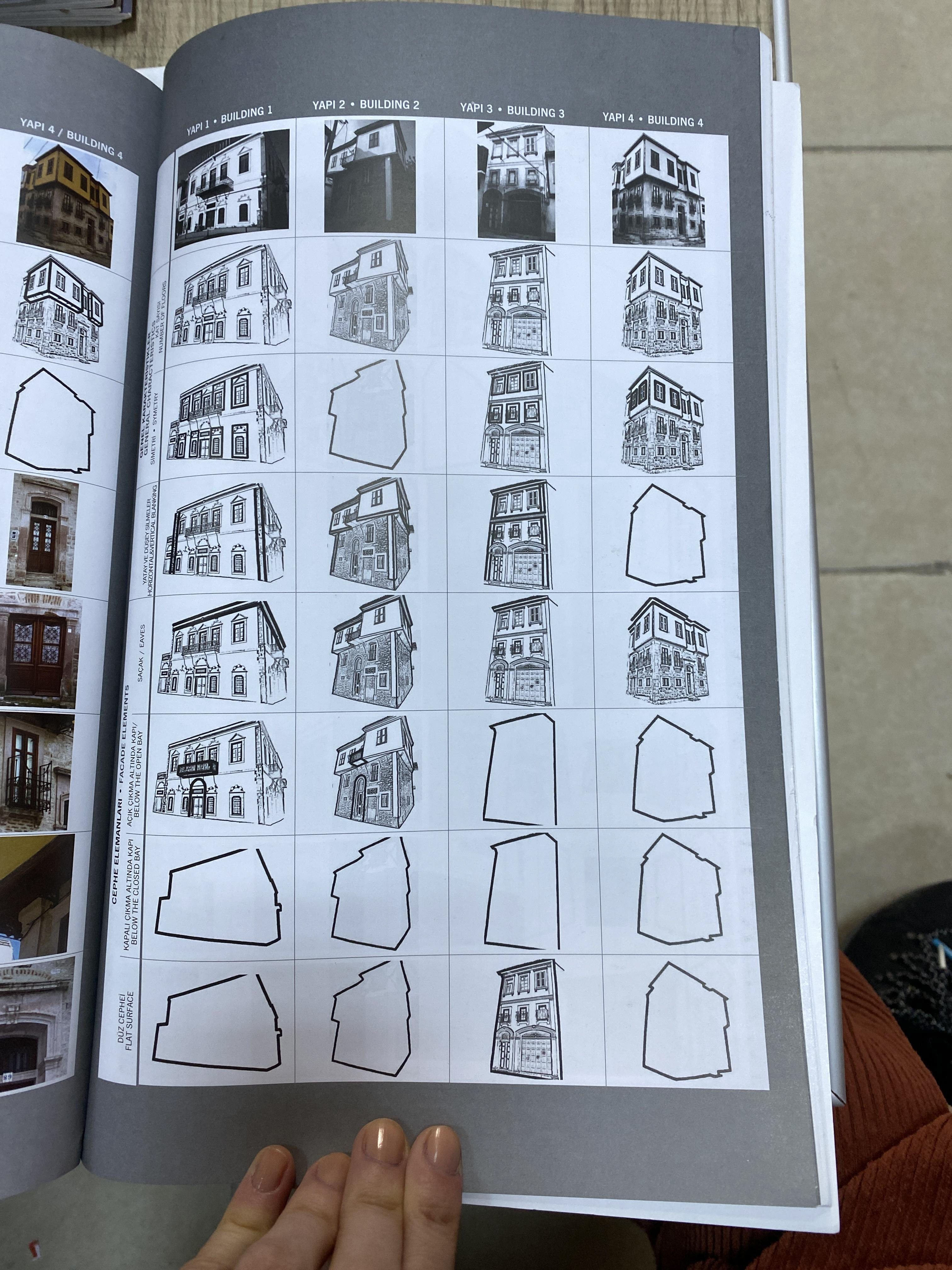
Facade elements
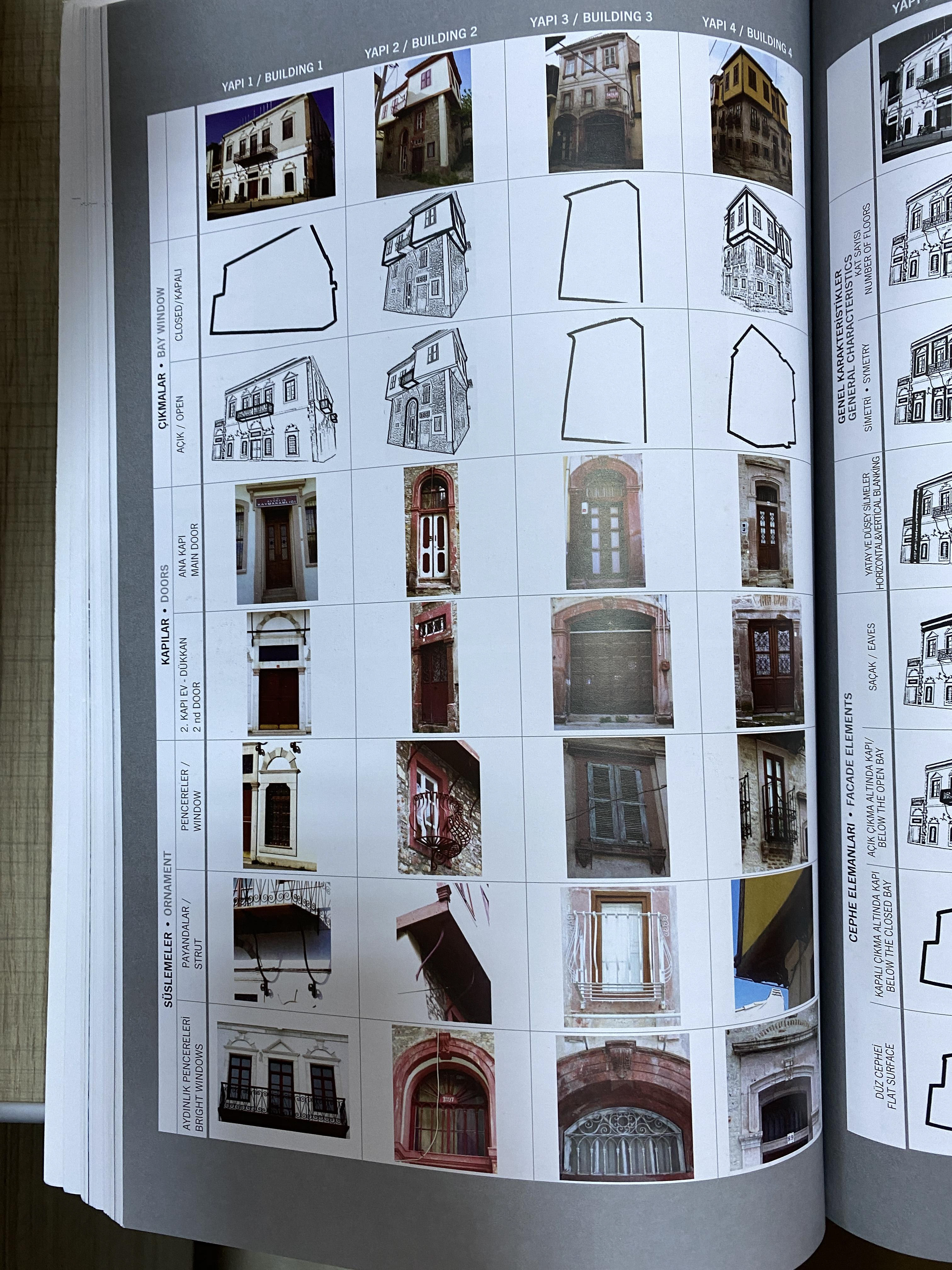
Facade elements
